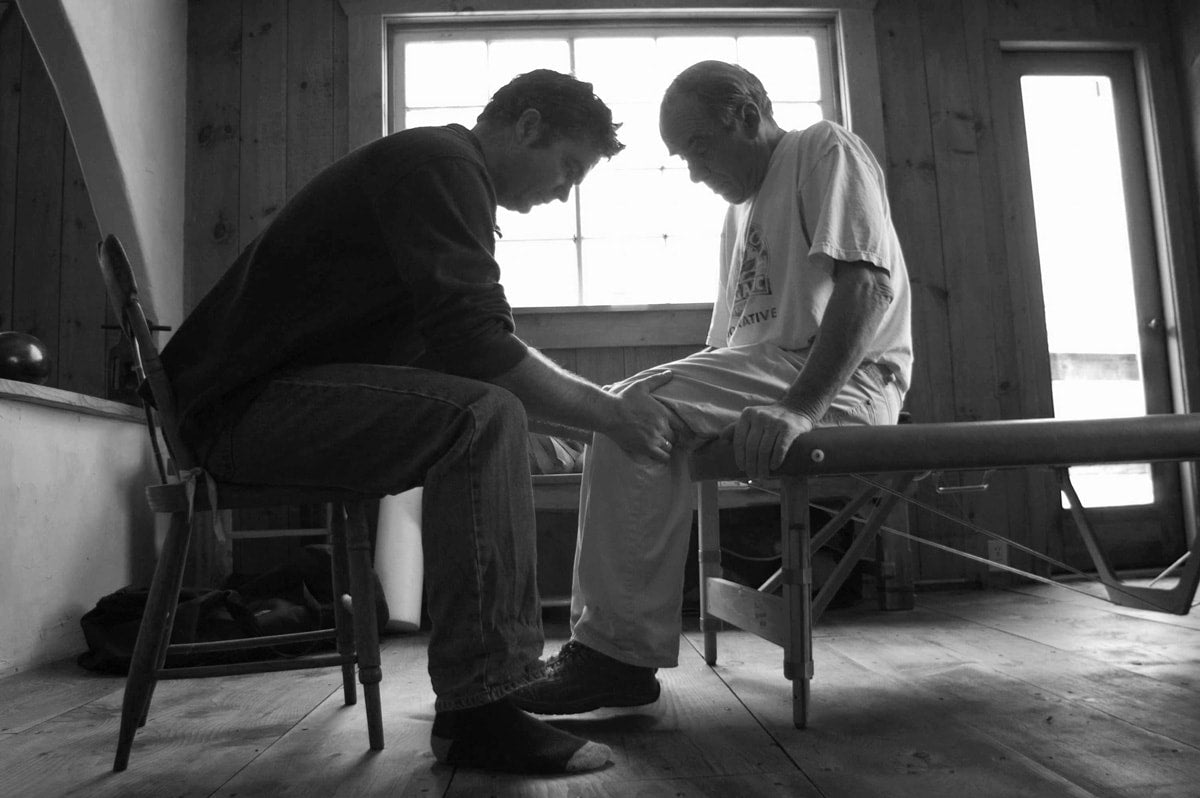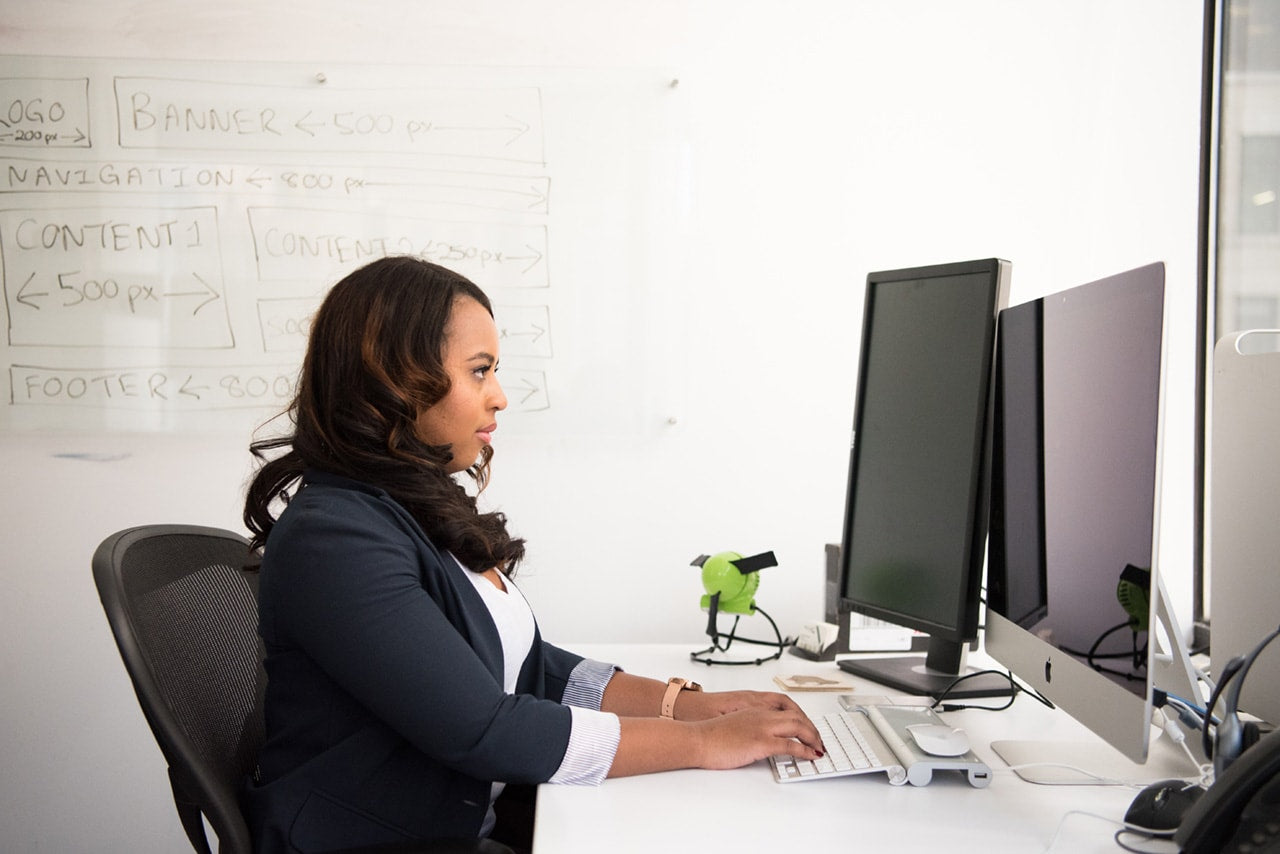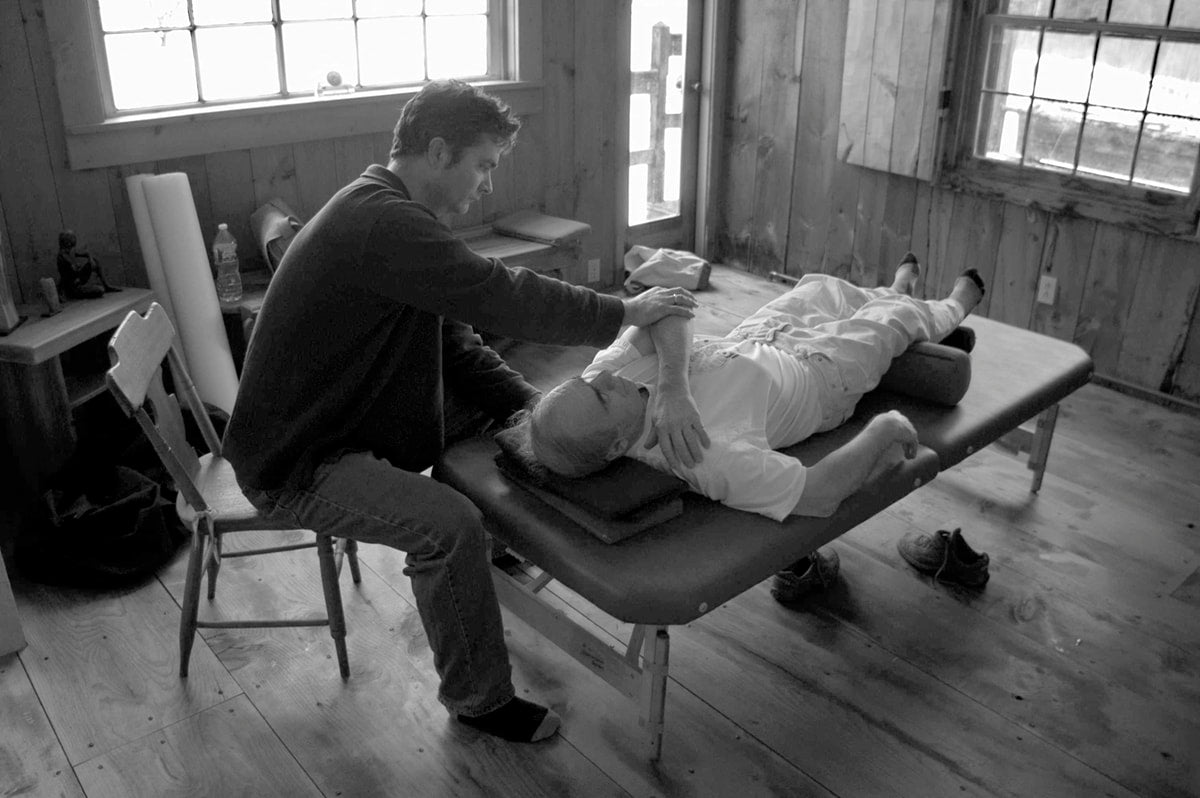A Guest Blog by Uwe Mester, Certified Feldenkrais Teacher, Member of the Feldenkrais Guild of America
I would like to introduce you to Uwe Mester, a body movement and posture expert who has been a part of the QOR360 team from the start, and highly influential on my development of the RedRocker. Uwe is a Certified Feldenkrais Teacher, and Member of the Feldenkrais Guild of America. We recently began offering complimentary posture sessions with Uwe to QOR360 sitters, and thought we would take this opportunity to share more about his story and expertise. In this two post series, you’ll learn a little about Uwe’s history and experience as a Feldenkrais Method® teacher, how the principles of Feldenkrais work to relieve pain (back pain, specifically), and how the Feldenkrais Method® works hand-in-hand with active sitting.
If you’re interested in learning more about taking a complimentary posture session with Uwe, click here. - Turner
Part 1: An Introduction to the Feldenkrais Method® and Uwe Mester
Back pain. It’s an almost universal experience among Americans, with 80% seeking help at some point in their lives. But despite the immense scope of this problem, back pain remains poorly understood and therefore poorly treated. Strength training, stretching and improving flexibility, chiropractic work, aerobic exercise and even surgery are typically tried as treatment options, but such a wealth of alternatives serves only to underscore the fact that no single reliable treatment has yet been discovered.
An appealing treatment option for low back pain is the Feldenkrais Method®. Although not widely known in the US, awareness of the Feldenkrais Method® is growing; a recent NY Times article raised its profile considerably:
Unique among treatment options for back pain, the Feldenkrais Method® takes an educational rather than medical approach. Learning begins with the observation that movement coordination plays a key role in creating, and thus in healing pain. Feldenkrais practitioners are trained to help people become aware of their own movement, and to discover more options for moving without pain. The goal is for people to become aware of and learn how some movement patterns have contributed to their pain, and to better coordinate movements to reduce, and over time eliminate, that pain.
In our strength crazed culture, it's often assumed that the origin of back pain is at least in part due to weakness of the muscles in the lower back and abdomen, and that this lack of strength leads to slumping, poor posture, and ultimately back pain. But why then do we see highly trained athletes, who clearly have abundant core strength, also experiencing back pain?
The Feldenkrais perspective is more nuanced, and suggests that the problem is not lack of muscular strength, but rather that people have learned to move in ways that overuse their lower back and strengthen some muscles at the expense of others, either because of a movement habit or how they engage with their environment.
Because the problem is one of muscular coordination rather than muscular weakness, the Feldenkrais Method® seeks to help people find new, less pathological movement patterns. This reeducation process can take place over the course of a few group lessons or individual sessions with a Feldenkrais practitioner.
My path to Feldenkrais
I grew up in Germany, and was involved in highly competitive sports my whole life. I experienced back pain for as long as I can remember, but always ignored it living by the athlete mantra, “no pain no gain”. Ignoring it “worked” until I was about 27 years old. Suddenly, my back pain increased to intolerable levels and I lost the ability to control my right foot. I was diagnosed with an extreme case of Sciatica due to a ruptured disk in my lower back.
My diagnosis was shocking - how this could have happened to me at such a young age? I never had a traumatic accident and my body, especially my core abdominal muscles, was very strong from daily training. I consulted numerous experts from the medical field in order to avoid back surgery (discectomy), and began intense physical therapy.
With no improvement after four months but still hoping to return to my active lifestyle, I opted for disk removal surgery. Following six months of intensive rehabilitation post-surgery, the pain unfortunately persisted and the numbness in my leg remained.
Highly frustrated, I started to explore alternative treatment options. I tried Yoga, massage, Reiki, and others, but nothing improved the pain. A friend suggested a method called “Feldenkrais”. Extremely skeptical, I made an appointment with a Feldenkrais practitioner. After only one session, and for the first time in a year, I felt a reduction in the pain. I could not believe such remarkable results from a Method I had never heard of before.
I continued to take Feldenkrais classes and after six months, my pain was gone. Since the Method is grounded in teaching, I also began to understand how certain movement patterns had significantly contributed to my back pain, my whole life.
Fascinated by this unusual approach of becoming aware of my movement habits and discovery of new movement options, I signed up for the 4-year training program to become a Certified Feldenkrais practitioner. After earning my Certification in 2005, I began teaching classes while still in Germany. Then following a move to Vermont, I opened my own practice in 2009. I am proud to say that for over 15 years I have been successfully helping people move out of pain using the Feldenkrais Method®.
I met Dr. Osler a few years back when he started attending my Feldenkrais classes. Like many people, Dr. Osler came to me looking for a different way to resolve his body pain issues. In examining how Dr. Osler moved through his environment, we quickly landed on sitting as the root of his problems. That began his quest for a better way to sit, and our work together in developing the method of active sitting utilized by QOR360 chairs.
I have had the pleasure of working with the QOR360 team since the start, and am excited to be now offering online posture sessions to sitters. In a short session via video conference, I can review how your body is positioned on your chair, and provide suggestions on how to get the most from active sitting.






Leave a comment
All comments are moderated before being published.
This site is protected by hCaptcha and the hCaptcha Privacy Policy and Terms of Service apply.